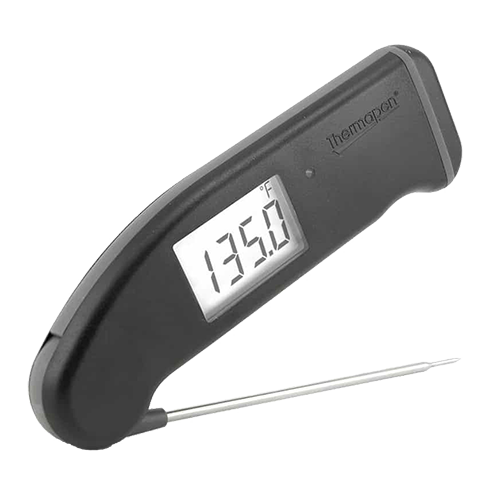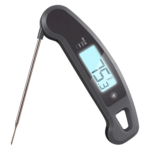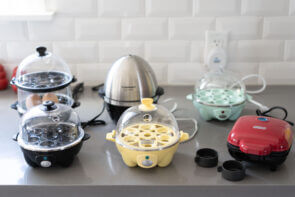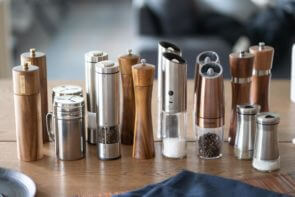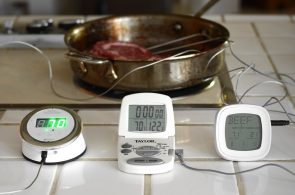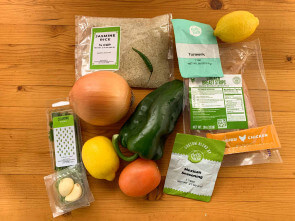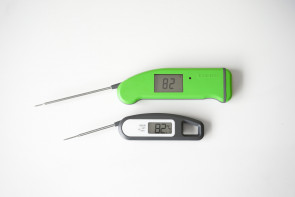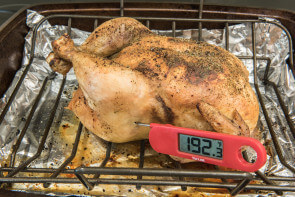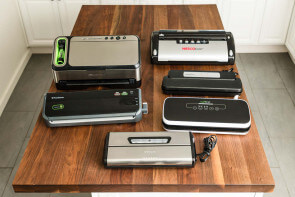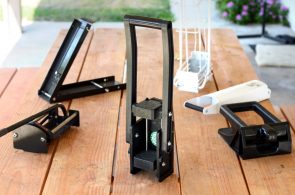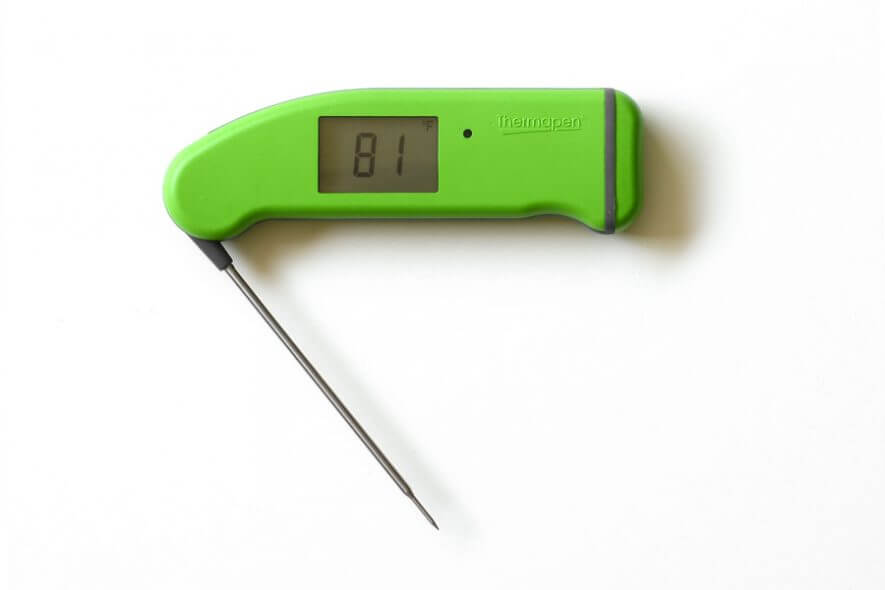
ThermoWorks Thermapen Review
We took an in-depth look at nine of the best digital meat thermometers on the market, including the expensive-yet-popular ThermoWorks Thermapen. While the Thermapen is certainly among the best, we found that most cooks will be more satisfied by less-expensive thermometers that also have features that make them easier to use, such as the Lavatools – Javelin PRO. Read on to check out our review of the Thermapen, or take a look at our full review of the nine best digital meat thermometers on the market.
Featured Product
We took an in-depth look at nine of the best digital meat thermometers on the market, including the expensive-yet-popular ThermoWorks Thermapen. While the Thermapen is certainly among the best, we found that most cooks will be more satisfied by less-expensive thermometers that also have features that make them easier to use, such as the Lavatools – Javelin PRO. Read on to check out our review of the Thermapen, or take a look at our full review of the nine best digital meat thermometers on the market.
Table of contents
- Finding the best digital meat thermometer
- What made the Thermapen stand out
- What we didn’t like about the Thermapen
- Thermapen vs. Lavatools Javelin PRO
- Should you buy a Thermapen?
Finding the best digital meat thermometer
We used a series of tests to rank each of the nine thermometers and determine which one was the best overall. These tests included the following:
- Temperature accuracy in freezing water
- Temperature accuracy in boiling water
- Hands-on usability testing while tempering dark chocolate
- Checking cooked meat, including thick rib-eye steak, chickens, roasts and burgers
What made the Thermapen stand out
The Thermapen sits at the very top of the price range for all of the digital thermometers we tested. While we aren’t quite sure that it’s worth the $100 regular price, there were still plenty of things we liked about the Thermapen.
Temperature range
The Thermapen led the field in the temperature range it could handle. During our testing, it was able to measure temperatures as low as -60°F, the lowest of all nine thermometers we tested (by about 20 degrees).
On the high end, the Thermapen is comparable to the other two top thermometers in this metric: the Taylor – 9867B Turbo and the ThermoPro – TP19.
| Thermometer | Minimum Temperature | Maximum Temperature |
|---|---|---|
| ThermoPro - TP19 | -58 | 572 |
| Lavatools - Javelin PRO | -40 | 482 |
| Alpha Grillers | -58 | 572 |
| ThermoWorks - Thermapen Mk4 | -60 | 572 |
| CDN - ProAccurate | -40 | 450 |
| Lavatools - Javelin | -40 | 482 |
| ThermoPro - TP03A | -58 | 572 |
| Taylor - 9867B | -40 | 572 |
While this wide of a range isn’t needed by everyone — even those who are checking a steak on the grill — it does add to the overall versatility of the thermometer.
Ergonomics
None of the thermometers we tested were particularly difficult to handle. However, one thing we really liked about the Thermapen was the fact that the display would automatically rotate depending on which direction the thermometer was being held.
Instead of needing to turn our head sideways to read the temperature, we could easily read the temperature from any direction.
According to the ThermoWorks website, this is a technology they have patented, which means if you want to look at your digital thermometer without looking sideways, you probably need to go with the Thermapen.
Read speed
The Thermapen was among the top performers among our instant-read finalists when we tested the speed with which each could find the correct temperature.
| Thermometer | Avg. Speed, Ice | Avg. Speed, Boiling | Average (Seconds) |
|---|---|---|---|
| ThermoPro - TP19 | 3.0 | 2.3 | 2.7 |
| ThermoWorks - Thermapen Mk4 | 3.3 | 3.8 | 3.6 |
| Taylor - 9867B | 5.2 | 3.1 | 4.2 |
| Lavatools - Javelin PRO | 4.0 | 4.9 | 4.7 |
| Alpha Grillers | 7.0 | 4.5 | 5.8 |
| ThermoPro - TP03A | 9.5 | 4.0 | 6.8 |
| CDN - ProAccurate | 9.7 | 8.1 | 8.9 |
| Lavatools - Javelin | 11.3 | 9.5 | 10.4 |
The Thermapen came in second place when measuring the temperature of ice water and boiling water. While the Thermapen isn’t the fastest-reading thermometer in the world, it’s a very tight race, especially if you’ve been using an analog dial thermometer.
Waterproofing
The Thermapen is one of the few thermometers that is tested and guaranteed to survive a trip to the bottom of a sink or a stock pot full of cold water. Other good brands have added splash-proofing so you can rinse them off under running water, but don’t submerge them unless you want to find out what happens when the internal control and display circuits get wet.
Customization and calibration
One option we love on the Thermapen is the setting that turns off the decimal reading on the display. We can’t actually think of a kitchen application for distinguishing between 145.1°F and 145.7°F, so we set it to display whole numbers only. You can also set the display to stay in one position, if you don’t like the way it rotates, and customize how long it waits to turn off.
The calibration function is controversial. Some people, like health inspectors, may be required to calibrate their thermometers on a regular basis to make sure they’re reading accurately. We’re glad that ThermoWorks included this option on a $100 thermometer, but for most of us, changing the factory calibration is almost guaranteed to make the thermometer less accurate.
All in all, the Thermapen is a big winner for those who need to be certain about what they’re checking. Even if the Thermapen is a few tenths of a degree further from an ice or boiling reading than some of the others we tested, ThermoWorks provides a NIST-compliant certificate that guarantees the reading in different temperature ranges—and each hand-assembled thermometer is traceable by its serial number. If you’re buying gear that needs this kind of certification, $100 is cheap like borscht.
What we didn’t like about the Thermapen
The most significant thing we disliked about the Thermapen was the cost. At more than $100 (including shipping, tax, etc.), the Thermapen commands a significant premium over other digital food thermometers in the market, including the other eight finalists we tested.
While a high price isn’t in and of itself a disqualifier, it is difficult to justify the cost of the Thermapen for most home cooks. The problem isn’t really the Thermapen, it’s the new crop of competitors offering compelling new features for far less money.
Good performance, but not the best
As we mentioned above, the Thermapen performs well. That being said, it is neither the fastest, nor the most accurate thermometer we tested.
One of the major selling points that ThermoWorks uses to justify the cost of the Thermapen is the fact that it utilizes a “thermocouple” sensor instead of a “thermistor” sensor. This was a significant advantage 15 years ago, when such sensors were mostly found in laboratory gear, but we’re now seeing the same type of sensor in some $20–30 meat thermometers.
The new ThermoPro – TP19 managed to squeak ahead of the Thermapen on all of these performance metrics. The Taylor – 9867B and Javelin Pro are also close enough that it’s not worth drawing a distinction between them.
Storage
When you’re using a meat thermometer at home, how you store it is far more important than accuracy to a half of a degree. We love the folding-probe design, which makes mushy buttons a thing of the past and makes waterproofing better, but that’s a common feature now.
The gap between the Thermapen and competing designs is the lack of a magnet for easy storage on a fridge or above the stove on a vent hood. ThermoWorks sells a $13 silicone protective boot with magnets, but there’s no reason not to update the design and include magnets inside.
Display
While the rotating display (probably made with a different layer for each position) makes it easier to read numbers in one way, it seems to be causing difficulty with other important factors: contrast and viewing angles. The backlight helps you work in dark places and the display is fine when you’re viewing directly from the front, but most of the competition is better. When viewed from a 45 degree angle with the probe pointing toward you, the Thermapen display loses almost all of its contrast and is difficult to read.
If the price point of the Thermapen were in the $40-60 range, we’d recommend it more highly. However, for the price, we simply don’t think that it’s worth it for home cooking — not when we consider our other finalists.
Thermapen vs. Lavatools Javelin PRO
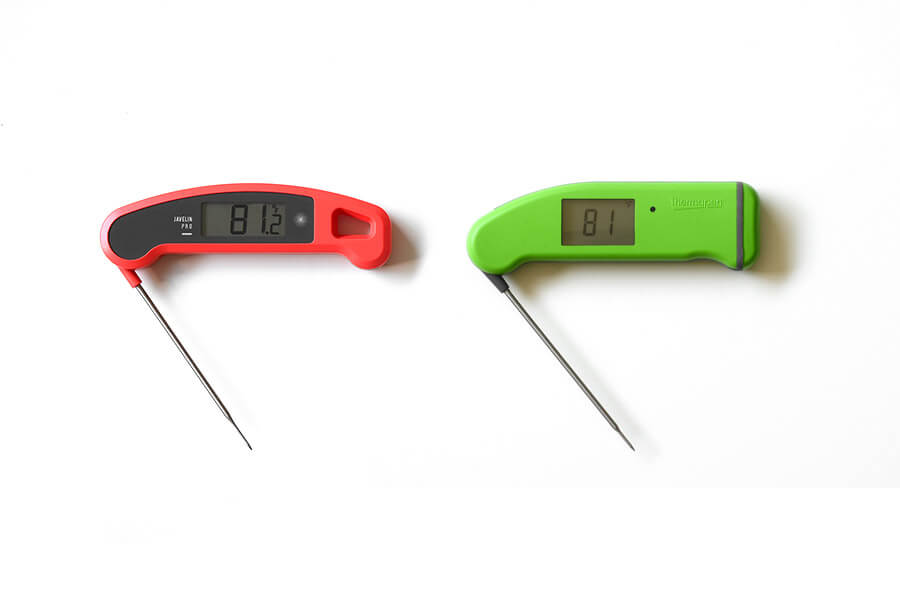
As we mentioned, the Thermapen performs well, but not as well as our top pick — specifically, the Lavatools – Javelin PRO.
Temperature range
The Thermapen has a larger temperature range on both the high and the low end when compared to the Javelin PRO.
On the high end, the Thermapen works up to temperatures close to 600°F, while the Javelin PRO is effective up to about 475°F. On the low end, the Thermapen is functional in temperatures as low as -60°F, compared to the Javelin PRO which stops functioning at -40°F.
Winner: Thermapen
Temperature accuracy
Both the Thermapen and the Javelin PRO were functionally the same with regard to temperature accuracy.
In our freezing water tests, both thermometers read either precisely 32°F or one tenth of a degree off. In our boiling water test, The Thermapen registered 0.2°F, closer to the correct measurement.
ThermoWorks wins this easily by including an individual calibration certificate from their lab (the company was started by calibration specialists), which is worth far more than the certainty of home tests.
Despite the excellent certainty offered by a ThermoWorks calibration, most home cooks won’t benefit from getting closer than 2°F. This is for all realistic purposes a tied result, but since we’re gear nerds, we’ll give the kudos to Thermoworks.
Winner: Thermapen
Temperature read speed
Both the Lavatools Javelin PRO and the ThermoWorks Thermapen were among the best performers across this category.
However, when comparing just the tests in ice and boiling water (where we have a verified stop point for our timer), the Thermapen was faster by 1.1 seconds on average.
While the edge does go to the Thermapen, it’s important to note that more and more thermometers are able to produce accurate readings just as quickly. The new ThermoPro – TP19 actually beat it by 0.9 seconds in the average of our 2020 tests. We consider the Thermapen’s edge to be marginal in real-world applications.
Winner: Thermapen
Price
The price of these products does change from time to time. However, in general the price of the Thermapen is about double what you’d pay for a Javelin PRO. At the time of testing, this meant spending $50 versus spending $100. Unless you’re working in a professional or commercial kitchen, the marginal improvements of the Thermapen are probably overkill.
Winner: Javelin PRO
Should you buy a Thermapen?
While the Thermapen is undoubtedly an excellent product, overall we found the value to be unequal to the price for most buyers. The exception would be if you need the certified calibration or waterproofing — in those cases, it’s basically your only option.
Based on our testing data and 4 years of daily kitchen use, we can say with confidence that the Lavatools – Javelin PRO is an overall better value.
We encourage you to check out our full review of the nine best digital meat thermometers, in order to see how we came to this conclusion in greater detail.
More Reviews
The 8 Best Electric Egg Cookers
Elite Gourmet - EGC-007B
The 8 Best Salt and Pepper Grinders
Merazi Living
Blue Apron
Martha & Marley Spoon
HelloFresh Meal Delivery Kit Review
HelloFresh
Mueller - MFFVS-01
Chef’sChoice - 1520
The Best Aluminum Can Crushers
Dial Industries - Easy Pull


